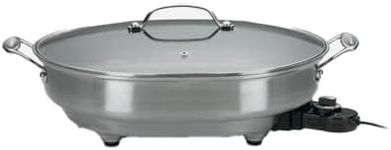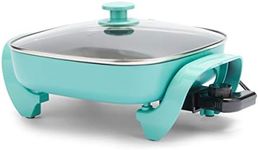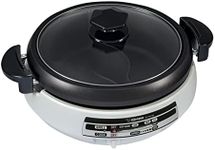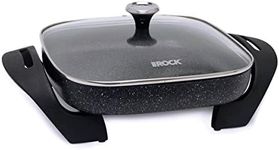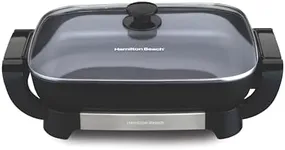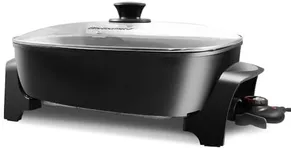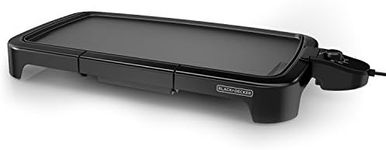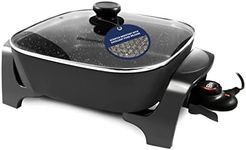Buying Guide for the Best Electric Frying Pans
Choosing the right electric frying pan can make cooking easier, faster, and more enjoyable. Electric frying pans are versatile kitchen appliances that allow you to fry, sauté, simmer, and even bake with consistent heat. When picking one, it's important to consider how you plan to use it, the size of your household, and the types of meals you like to prepare. Understanding the key features will help you select a model that fits your cooking style and needs.Size and CapacitySize and capacity refer to how much food the electric frying pan can hold at once. This is usually measured in inches (for the diameter) or quarts/liters (for volume). Smaller pans (10-12 inches) are great for individuals or couples, while larger pans (14 inches or more) are better for families or entertaining guests. If you often cook for a group or like to prepare big meals, a larger pan will be more convenient. On the other hand, if you have limited kitchen space or cook for one or two people, a smaller pan will be easier to store and handle.
Temperature ControlTemperature control is the ability to adjust and maintain the heat level of the pan. Some electric frying pans have simple low, medium, and high settings, while others offer precise temperature dials. Precise controls (with numbers or specific temperature ranges) are useful if you want to cook a variety of dishes that require different heat levels, such as simmering sauces or frying meats. If you mostly cook simple meals, basic controls may be sufficient. Think about the types of recipes you enjoy and whether you need fine-tuned temperature settings.
Nonstick SurfaceA nonstick surface prevents food from sticking to the pan, making cooking and cleaning much easier. Most electric frying pans have a nonstick coating, but the quality and durability can vary. Higher-quality nonstick surfaces last longer and are less likely to chip or peel. If you want hassle-free cooking and easy cleanup, look for a pan with a good reputation for its nonstick coating. If you plan to use metal utensils, make sure the surface is scratch-resistant, or stick to wooden or silicone tools to preserve the coating.
Shape and DepthThe shape and depth of the pan affect what and how much you can cook. Shallow pans are ideal for frying and sautéing, while deeper pans are better for stews, casseroles, or dishes with sauces. Some pans are round, while others are rectangular or square, which can provide more usable cooking space. Consider what types of meals you prepare most often—if you like making stir-fries or one-pan meals, a deeper, larger pan might be best. For simple frying or breakfast foods, a shallower pan will do the job.
Lid QualityThe lid helps retain heat and moisture, which is important for simmering and slow-cooking. Lids can be made of glass or metal; glass lids let you monitor your food without lifting the lid, while metal lids are more durable. A tight-fitting lid is important to prevent heat and steam from escaping. If you plan to use your electric frying pan for slow-cooked dishes or want to keep food warm, pay attention to the quality and fit of the lid.
Ease of CleaningEase of cleaning refers to how simple it is to wash the pan after use. Some electric frying pans have removable heating elements, allowing you to submerge the pan in water, while others require careful wiping. Dishwasher-safe pans make cleanup even easier. If you value convenience, look for a model that is easy to disassemble and clean, especially if you plan to use it frequently.
Handles and PortabilityHandles should stay cool to the touch and be sturdy enough to support the weight of the pan when full. Some pans have detachable handles for easier storage. If you plan to move the pan from the kitchen to the dining table or take it to gatherings, comfortable and heat-resistant handles are important. Consider how often you'll need to move the pan and whether portability is a priority for you.


